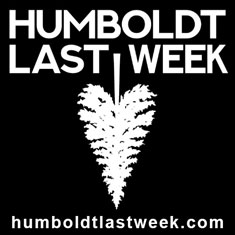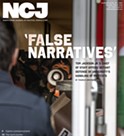Mendo Muddle
The North Coast's southern section is far from accord on the Marine Life Protection Act
By Tim Stelloh[
{
"name": "Top Stories Video Pair",
"insertPoint": "7",
"component": "17087298",
"parentWrapperClass": "fdn-ads-inline-content-block",
"requiredCountToDisplay": "1"
}
]
"Consensus" isn't a word that comes to mind with the Marine Life Protection Act, Mendocino County branch.
Consider a Monday night meeting in Fort Bragg, where fishermen, seaweeders and enviros convened at St. Micheal's Episcopal Church to do one thing: figure out which areas along the Mendo Coast to "protect" -- that is, which coastline to turn into no-take reserves and protected areas that limit or block fishing and harvesting, as required under MLPA.
Brevity was important. So was compromise, as the deadline is Feb. 1 for Mendo, Del Norte and Humboldt counties -- together the North Coast region of the MLPA -- to officially make their choices as a single, unified group. If the coalition blows the deadline, the state will have a whole lot more power to make those decisions for them -- particularly for Mendo, said Jennifer Savage of the Ocean Conservancy. (Ed. note: Savage is the Journal's art and poverty columnist.)
This process, of course, has been mired in conflict. Fishermen, seafood harvesters and other critics have called the science behind those protected zones -- which the state says should be about nine square miles every 30 to 60 miles -- bogus. They've described the process as an unfair, underfunded burden on communities, as obfuscatory and hostile to public input. Some have described the entire premise of MLPA as, at best, misguided and, at worst, a conspiracy to wrest control of California's coast. On the flip side, enviros say the process has been transparent, and the protected areas are necessary to safeguard against overfishing and other harmful activities.
Del Norte has done just fine in deciding which parts of its coast to protect. Humboldt has slogged through. Then there's Mendo, which, let's just say, has had a few problems.
It was about about two and a half hours into the Monday meeting when the mood soured. Bill Lemos, a local teacher who's working with National Resources Defense Council (or "Big Green," as MLPA foes call it) and Conservation First!, had, using a computer model map and projector, just cataloged all the areas he thought suitable for protection -- areas near Cape Vizcaino and Pt. Cabrillo, among others.
A group of fishermen from the Salmon Trollers Marketing Association weren't having it. Until now, most of them had, well, been fishing, and unable to attend any of the create-your-own map meetings that recently began, said Ben Platt, a salmon and crab fisherman. No longer. Were the state to implement one of Lemos's suggestions near Usal Beach, he said, they'd lose 80 percent of their crab.
"That would gut the crabbing area," another fisherman said. "I don't know why you'd even put that up there."
Another fisherman chimed in: "We've got to take in the economic value of our community. Commercial, recreational, everyone here. We're supposed to be doing adaptive management not protective management -- "
Lemos had had enough.
"Folks, we've been through this before. We walked out of this meeting before saying, 'We are not here to take your negative input,'" Lemos said, referring to a meeting earlier this month that ended on less than cordial terms. "We're here to share with you what our ideas are. We understand that these [changes] will cause you to be less active in the ocean and cause you some economic hardship. We understand that part of it. But folks, these are coming from somewhere, and we are trying to adapt them to places that would have the least impact. Thank you for your input, but I really don't want to be here all night arguing with you. We've done the best we can."
Another debate followed -- one that shows how bewildering the process is: Just how much coastline does the state require that the North Coast region set aside in order to comply with MLPA rules? And just how important is that rule anyway? According to Dave Wright, a recreational fisherman, it's not a top priority.
Lemos disagreed.
Even though there's not a strict number, for the next echelon of scientists to even consider the map of protected coastline -- the one that's due in under a week -- 15 percent of the North Coast should be protected, he said, adding that even that would be on the low end. In other parts of the California coast where MLPA has been implemented, between 16 and 22 percent of coastline has been turned into reserves and protected areas.
"I thought they were re-evaluating that for the North Coast," Wright said. "Aren't they re-evaluating that?"
"I don't know," Lemos said.
And that's pretty much where the meeting ended -- almost an hour past the scheduled end time, with no apparent compromise and no single, unified map.
Which gives Mendo's many coastal stakeholders even less time. If they don't pull an all-nighter between now and next Monday and come up with that map, several maps will have to be submitted to begin the slow slog through the MLPA bureaucracy toward the final destination: a blue-ribbon panel appointed by the state, and the Department of Fish and Game, which the MLPA is officially part of.
With that last-gasp, non-public effort just days away, Jeanine Pfeiffer, the UC Davis scientist who's been moderating the discussions, had a stern warning to Mendo's enviros: "If we fail to protect our cultural heritage -- which in this region means small-scale fisheries, coastal towns and Native American tribes -- if we fail to protect our cultural heritage with the same passion and attention as our biological heritage, then we're not doing our best," she said.
Ladies and gents, get your NoDoz.
Comments (2)
Showing 1-2 of 2
more from the author
-
Coward of the County
Former Mendo County Republican chief Kenny Rogers given 25 years for attempted murder
- Apr 8, 2010
-
Know When To Kill Them
Dope, guns and Republican blood lust in Mendocino County
- Aug 20, 2009
- More »
Latest in News
Readers also liked…
-
Through Mark Larson's Lens
A local photographer's favorite images of 2022 in Humboldt
- Jan 5, 2023
-
'To Celebrate Our Sovereignty'
Yurok Tribe to host gathering honoring 'ultimate river warrior' on the anniversary of the U.S. Supreme Court ruling that changed everything
- Jun 8, 2023































